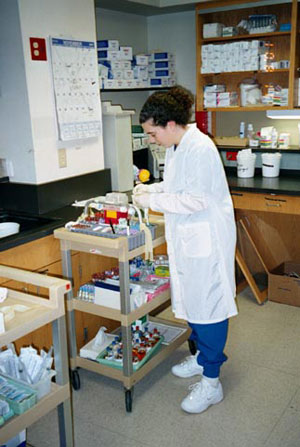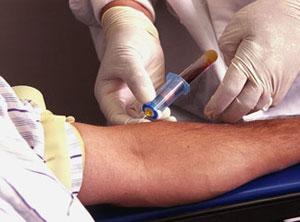Phlebotomist
Tasks & duties

Phlebotomists working in a medical laboratory may do some or all of the following:
-
greet patients
-
read request forms from doctors about patients
-
explain the procedure to patients and check their personal details
-
use various techniques to take blood from patients' veins
-
take capillary blood samples from fingers and heels
-
take skin and nail scrapings
-
label samples
-
collect blood samples from patients in hospitals, rest homes or private residences
-
take throat or wound swabs
-
collect samples of body fluids
-
test for allergies
Phlebotomists working as donor nurses may do some or all of the following:
-
greet donors
-
record donors' personal details, including their weight, age, blood type and contact details
-
explain the procedure to donors and check their personal details
-
take a finger-prick test to check the donor's haemoglobin (red blood cells) and ensure that iron levels in the blood are normal
-
take blood from donors
-
inform donors of emergency medical contacts for potential side effects of donating blood
-
care for donors that may be feeling dizzy or have an adverse reaction
-
provide refreshments for donors, and ensure they absorb enough sugar back into their system
-
maintain machinery and order supplies
-
advertise blood collection days
-
drive a blood bank collection vehicle
-
give talks at schools about donating blood
Specialisations
Phlebotomists may choose to work in a particular area of phlebotomy such as in a medical laboratory or as a donor nurse.
Skills & knowledge

Phlebotomists need to have:
-
knowledge of the anatomy of the arm and blood-taking techniques
-
the ability to take a variety of other bodily samples
-
knowledge of safety and hygiene
-
organisational skills
-
communication skills including listening skills
-
people skills
Entry requirements
To become a phlebotomist you need to have a current first aid certificate. You will also need a driver's licence for jobs where you travel to collect samples.
Phlebotomists who have worked full time for two years in a laboratory and passed all the levels in their competency log-book, need to sit the Qualified Phlebotomist Technician (QPT) exam to get registration.
Secondary education
School Certificate or NCEA equivalent in three subjects, including English, is required. Maths and science to a higher level is preferred by some employers.
Training on the job
Skills are gained on the job. Phlebotomists may attend conferences and courses to keep their knowledge up to date.
Useful experience
Useful experience for phlebotomists includes:
-
laboratory work
-
training and working as a nurse or nurse aid
-
work in hospitals (particularly medical laboratories)
Related courses
Laboratory Technology
Nursing
For more information, please refer to Career Services.
Document Actions
